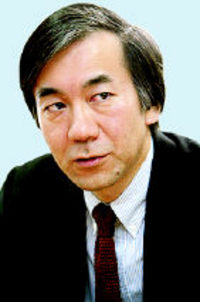 |
Nothing has changed about the situation, even after Okinawa was returned to Japan in 1972, since it is the location of 75 percent of U.S. bases in the country. Whether during the Iraq war or North Korea’s nuclear test, when there are tensions, the whole island is in a mode of virtual war preparedness. It is not a potential target merely because of the deployment of PAC 3s: there were already missiles on U.S. facilities aimed at the "enemy." I suspect that nuclear weapons are also being secretly placed there. Okinawa has always existed with a nervousness about being attacked. It is the Japanese government that is forcing Okinawa to be a sacrificial pawn for the Japanese mainland, and it is the mainland (yamato) and the Japanese people who support this. When mainland Japanese visit Okinawa, they see the massive U.S. bases and feel they are looking at a U.S. colony. Nevertheless, the Japanese government, because of the security treaty it signed with the U.S., provides the U.S. with bases and facilities, and it concentrates 75 percent of that in Okinawa. This reality is tolerated by mainland Japanese. Is not Okinawa therefore a "Japanese colony" instead of an U.S. one? I, too, am a mainland Japanese. Therefore, now matter how wrong I may think the situation, no matter how much I may oppose making Okinawa a huge military fort, I am still one of the perpetrators, and I cannot change the situation. If I want to oppose the concentration of U.S. bases in Okinawa, I have to at least call for a balanced distribution of bases around the country or directly oppose the U.S.-Japan security regime. What a lot of Okinawans wanted when their island was returned to Japanese rule was to have Japan’s "peace constitution" applied to Okinawa, to build a Japan that as a whole was true to the spirit of its constitution. North Korea’s nuclear test must not make U.S.and Japanese pressure encourage the North to "explode" and thereby bring wide-scale harm to North and South Koreans. We are at a most serious juncture for those who want peace for the Korean peninsula and Northeast Asia.





